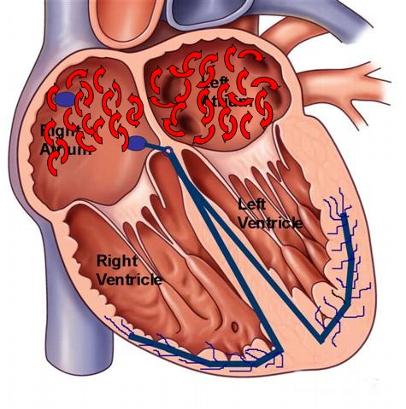Atrial fibrillation is the arrhythmia, a pathology characterized by the abnormal heart rhythm and irregular, generating rapid heartbeat. The habit of snuff, the blood pressure or body mass index is three major risk factors for developing this disease that affects our heart. Atrial fibrillation needs to be diagnosed and treated.
Atrial fibrillation is a type of cardiac arrhythmia, in particular, one of the most common, and serious consequences for our cardiovascular health including angina pectoris. Among the major risk factors, doctors and specialists have an impact on tobacco consumption, the blood pressure (hypertension problems) and body mass index (ratio between weight and height).
The prevalence of this condition is set at 4.4%, with no gender differences. Also, it is a disease that is related to other age. In fact, the risk of developing atrial fibrillation increases from 60, reaching prevalence above 17% among those over 80 years.
Symptoms
The palpitations (irregular heartbeat, either fast or slow) are one of the most common symptoms and tiredness or fatigue when performing everyday tasks. But, as with other diseases, the symptoms are not always obvious. It is estimated that around 10% of patients do not have a diagnosis. Having no history of heart problems or heart failure or diabetes, will not reduce our risk of developing atrial fibrillation if, for example, if we are smokers.
As we have noted, the snuff is one of the risk factors for this disease, but not alone. The most common risk factor and that usually hide behind most of the diagnoses – around 45% – is hypertension (high blood pressure). The overweight or obese, with hypercholesterolemia or diabetes, as well as developing other types of heart disease (angina pectoris, myocardial infarction, valve disease) can also make us more vulnerable to cardiovascular problems, including atrial fibrillation.
Treatment
The treatment of atrial fibrillation pursued, through the antiarrhythmic drugs, control heart rhythm (decreasing heart rate during the crisis) and reduce potential complications, including stroke. Not all patients have the same risk for stroke, so it is not always necessary to include in the anticoagulants drug treatment. As underlined by doctors, with proper treatment and checkups regularly, you can lead a normal life and live without risk of atrial fibrillation.
Treatment should not only be pharmacological, you also have to take a number of healthier habits, such as moderate consumption of foods and drinks with stimulants such as coffee, tea or cola drinks and alcoholic beverages. The practice of physical exercise, which we must not give up, should be moderate and opt for a kind of sport or softer activity.
In most cases, the diagnosis of atrial fibrillation is performed with a test as simple as the electrocardiogram.
